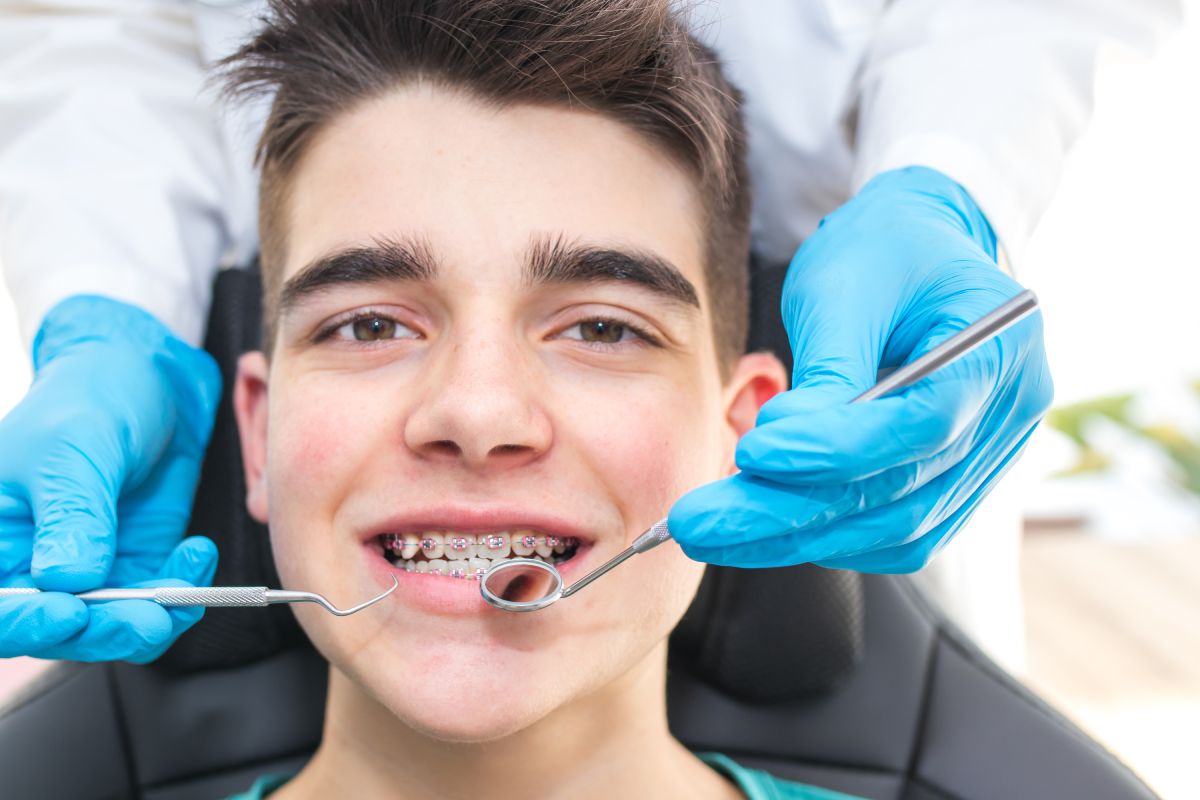The 20-Second Trick For Causey Orthodontics
Table of ContentsTop Guidelines Of Causey OrthodonticsFacts About Causey Orthodontics UncoveredThe Definitive Guide for Causey OrthodonticsThe Single Strategy To Use For Causey OrthodonticsHow Causey Orthodontics can Save You Time, Stress, and Money.Some Known Details About Causey Orthodontics 5 Easy Facts About Causey Orthodontics Explained
What is the distinction in between a dental professional and an orthodontist? All dental practitioners, including orthodontists, deal with the teeth, gum tissues, jaw and nerves.
Orthodontists and dental practitioners both offer dental treatment for people. Orthodontists can work in a dental office and offer the exact same therapies as various other dental experts. You can assume of both doctors that treat periodontal and teeth issues. The main distinction is that ending up being an orthodontist requires a particular specialty in dealing with the imbalance of the teeth and jaw.
How Causey Orthodontics can Save You Time, Stress, and Money.
An orthodontist is a dentist that has undergone training to specialize in the medical diagnosis, avoidance and treatment of irregularities in the jaw and teeth. They can also determine prospective problems in teeth positioning that might develop when problems are left without treatment (best orthodontist near me).
This consists of all the essential education and learning to come to be a basic dental expert. According to the American Student Dental Association (ASDA), it implies you will need to have either a Medical professional of Medication in Dental Care (DMD) or a Doctor of Oral Surgery (DDS). In other words, orthodontists require to complete oral institution and afterwards get an orthodontics specialized education and learning.
Some orthodontists also obtain their masters in craniofacial biology. These programs focus on 2 certain locations or disciplines: Dentofacial Orthopedics: This research focuses on guiding teeth and jaw development.
Everything about Causey Orthodontics

 The total objective of an orthodontist is to improve an individual's bite. Not everyone is born with straight teeth, and an orthodontist will make sure that clients obtain uniformly spaced straight teeth.
The total objective of an orthodontist is to improve an individual's bite. Not everyone is born with straight teeth, and an orthodontist will make sure that clients obtain uniformly spaced straight teeth.
About Causey Orthodontics
The American Association of Orthodontists suggests your very first check up by age 7. You'll require to see your orthodontist if you have a misalignment in your teeth, also called malocclusion. If you notice uneven bite patterns, a somewhat askew jaw, or when your teeth are chock-full, you will likely need orthodontic therapy.
In addition, we use adjustable treatment routines, versatile payment options and an enjoyable, delightful experience.
An orthodontist is a dental professional trained to identify, avoid, and treat teeth and jaw abnormalities. They deal with existing conditions and are trained to recognize issues that might establish in the future. Orthodontists deal with individuals of all ages, from children to adults. Individuals often associate a perfect smile with healthiness.
Some Ideas on Causey Orthodontics You Should Know
Malocclusion, or misaligned teeth, can lead to oral problems, including tooth degeneration, periodontal illness, and challenging or uncomfortable eating. Yet not everybody is birthed with straight teeth. If you have a negative bite or large rooms in between your teeth, you might intend to get in touch with a dentist concentrating on orthodontic care.
(Photo Credit: DigitalVision/Getty Images) Orthodontists make use of dealt with and removable oral devices, like braces, retainers, and bands, to alter the position of teeth in your mouth. Orthodontic treatment is for oral problems, including: Misaligned teethBite problems, like an overbite or an underbiteCrowded teeth or teeth that are as well much apartJaw misalignmentThe goal of orthodontic therapy is to improve your bite.
The Greatest Guide To Causey Orthodontics

All orthodontists are dental professionals, but not all dentists are orthodontists. Orthodontic residency programs provide extensive, concentrated direction for dental experts. They focus on 2 areas: Just how to correctly and securely move teeth Exactly how to properly lead advancement in the teeth, jaw, and faceOnce an orthodontist has actually finished training, they have the alternative to become board licensed.
Malocclusion leads to tooth overcrowding, an askew jaw, or uneven bite patterns. Malocclusion is generally treated with: Your orthodontist attaches metal, ceramic, or plastic square bonds to your teeth.
Indicators on Causey Orthodontics You Need To Know
If you have only small malocclusion, you might have the ability to utilize clear dental braces, called aligners, rather than conventional dental braces. Some individuals require a headgear to help relocate teeth into line with pressure from outside the mouth. After braces or aligners, you'll need to use a retainer. A retainer is a custom-made device that keeps your teeth in place.